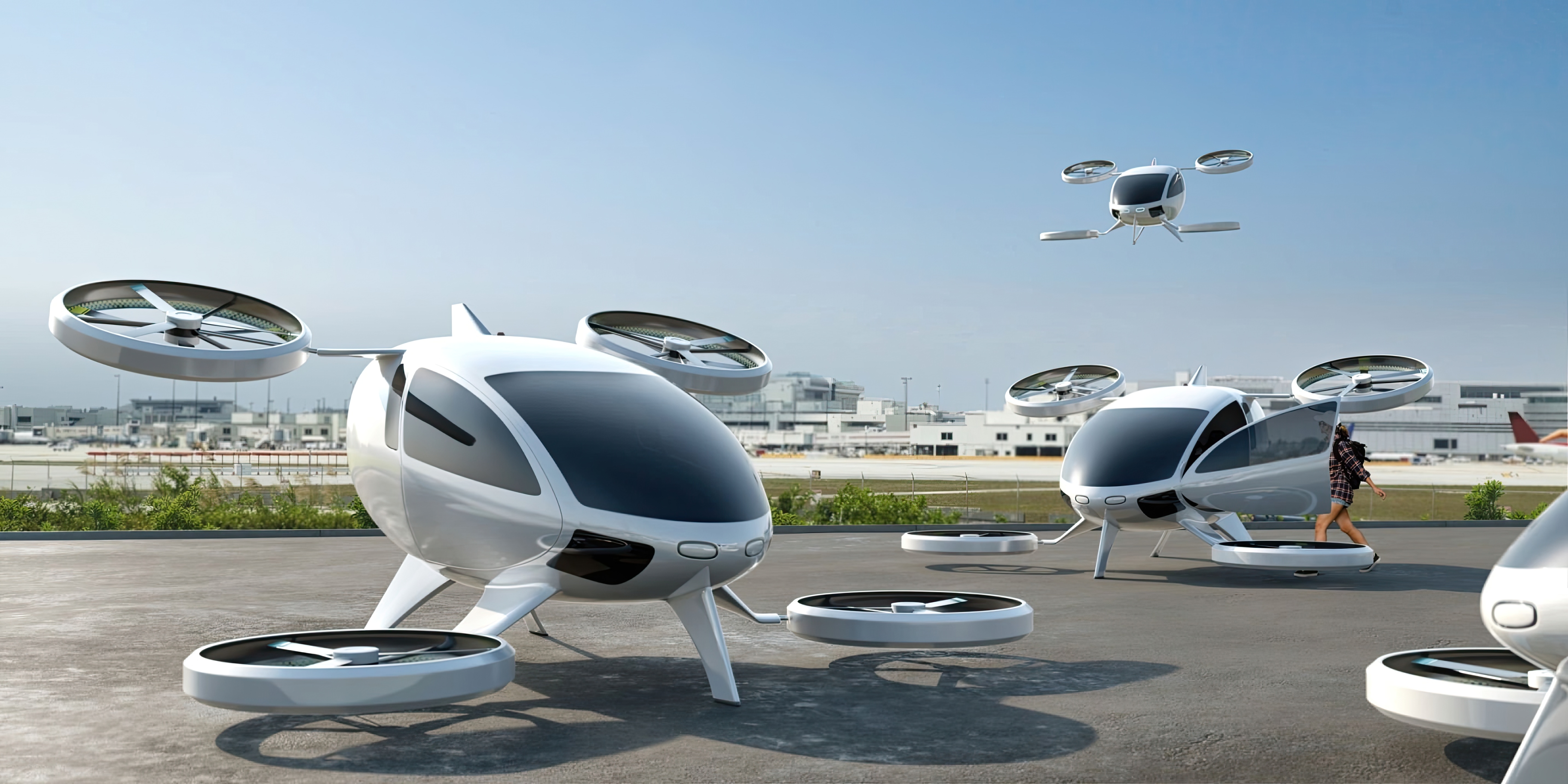At a glance:
- Aerospace regulator publishes safety analysis research to support the future integration of electric vertical take-off and landing (eVTOL) aircraft into UK airspace.
- Study identifies over 50 high-priority areas to develop regulations.
- Findings to inform the Advanced Air Mobility system under the regulator’s Future of Flight programme, helping to enable aerospace innovation safely and effectively.
To drive safety in our future airspace, the UK Civil Aviation Authority (CAA) has been working with experts from WMG, University of Warwick on new research to assess how future eVTOL aircraft can be safely integrated into UK skies.

The 18-month study, funded by the Department for Transport, forms part of the regulator’s Future of Flight programme. New research applying systems thinking has assessed the safety of future eVTOL aircraft operations in UK airspace. Systems thinking is a way of understanding how different parts of a whole system interact and influence each other, rather than focusing on individual elements in isolation.
The work includes research at the British Grand Prix at Silverstone where there is a high volume of helicopter and potential eVTOL operations. It contributes to the development of regulatory frameworks to support the safe integration of novel aviation technologies, such as eVTOL aircraft. It highlights key areas for regulatory advancement, including airspace integration, vertiport operations, and automation.
Rick Newson, Co-Chair of the eVTOL Safety Leadership Group, at the UK Civil Aviation Authority, said:
“With eVTOL aircraft expected to enter UK airspace within the next few years, proactive planning and coordination is essential to ensure their safe, responsible and seamless integration.
“This research provides valuable insights into the complex challenges and potential risks ahead.
“The results will feed into our ongoing regulatory development to enable innovation while maintaining the highest safety standards.”
The project aimed to identify potential hazards and safety gaps associated with eVTOL operations, analysing interactions between aircraft, software, hardware, and humans.
It was delivered in close collaboration with industry through the UK’s eVTOL Safety Leadership Group (eVSLG). Using workshops and technical meetings, a wide range of stakeholders, such as Bristow and NATS, contributed operational expertise that shaped the safety analysis and ensured the findings reflect relevant real-world challenges.
Professor Siddartha Khastgir, Head of Safe Autonomy at WMG, University of Warwick, said:
“For any technology, ensuring its safety is an absolute requirement for it to succeed commercially. And for emerging technologies like eVTOLs, a systems thinking approach to safety is necessary to understand the multiple interactions between the stakeholders.
“Underpinned by an open and transparent discussion, we commend and are grateful for this sector’s willingness to participate in this study, enabling them to identify and prepare for safety challenges for future eVTOL operations.”
The research proactively identifies risks that may arise from the future integration of eVTOLs into an already complex airspace system. The study identifies over 50 high-priority areas, many of which are applicable to both eVTOL and helicopter operations. Some of the key outputs of the report include:
- Airspace integration challenges: Air Navigation Service Providers should implement mechanisms to detect and alert controllers/service providers to deviations in aircraft performance (e.g., altitude, speed, trajectory) from expected parameters.
- Vertiport operational standards: The criticality of energy management requires Ground Services to use advanced real-time sensors to ensure provision of continuous feedback on landing conditions.
- Automation and simulation oversight: There are currently no mandated protocols for using automation and simulation tools to detect performance deviations or predict flight path conflicts.
Simon Meakins, Co-Chair of the eVTOL Safety Leadership Group and Director of Advanced Air Mobility at Bristow Group, said:
“This is an extremely valuable piece of work which proactively identifies potential risks and enables them to be mitigated effectively. With the emergence of new technologies it is essential to pragmatically manage safety from the start, and this project is an important part of that process.
“I thank the entire team who has been engaged in the project for their dedication.”
These findings are now being considered by the UK Civil Aviation Authority as part of its ongoing regulatory development work. Findings will also feed into the Airspace Modernisation Strategy, to allow for new airspace users as new technology takes flight.

